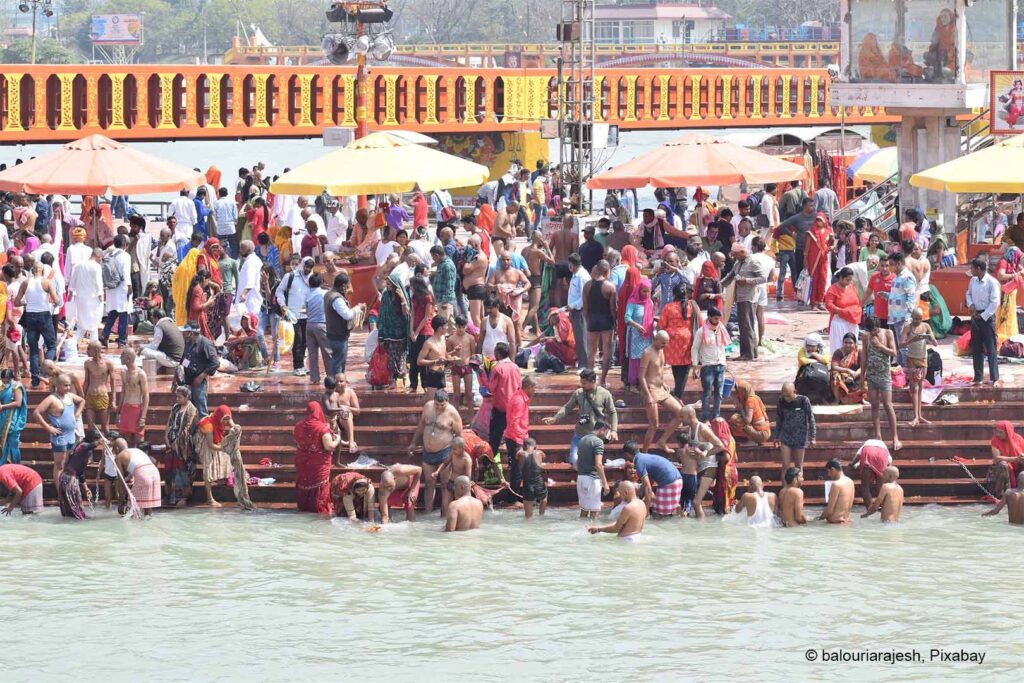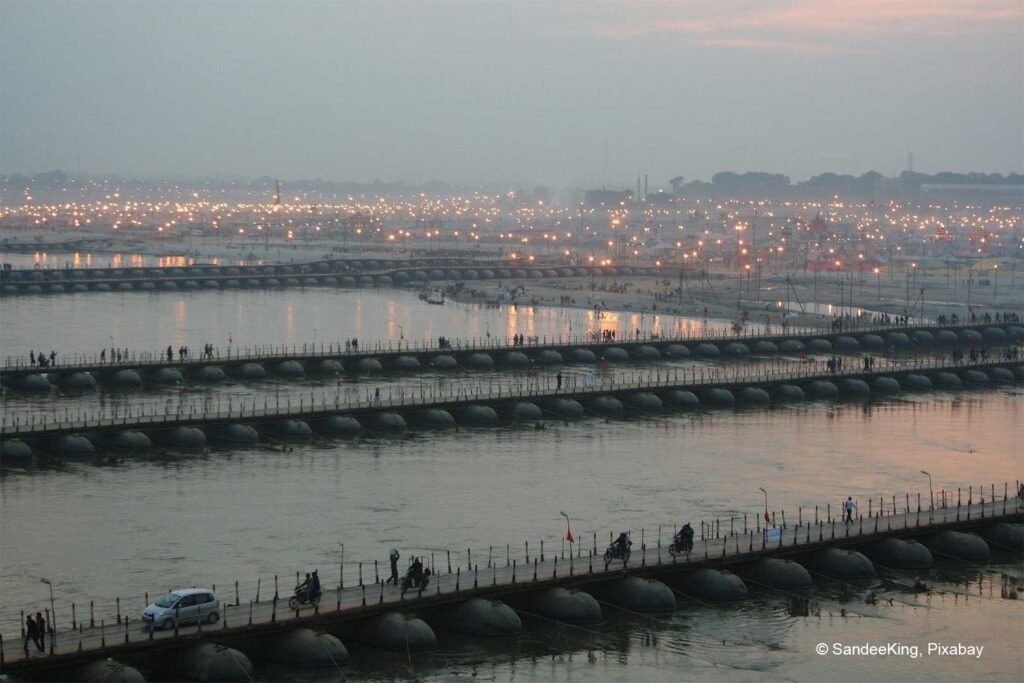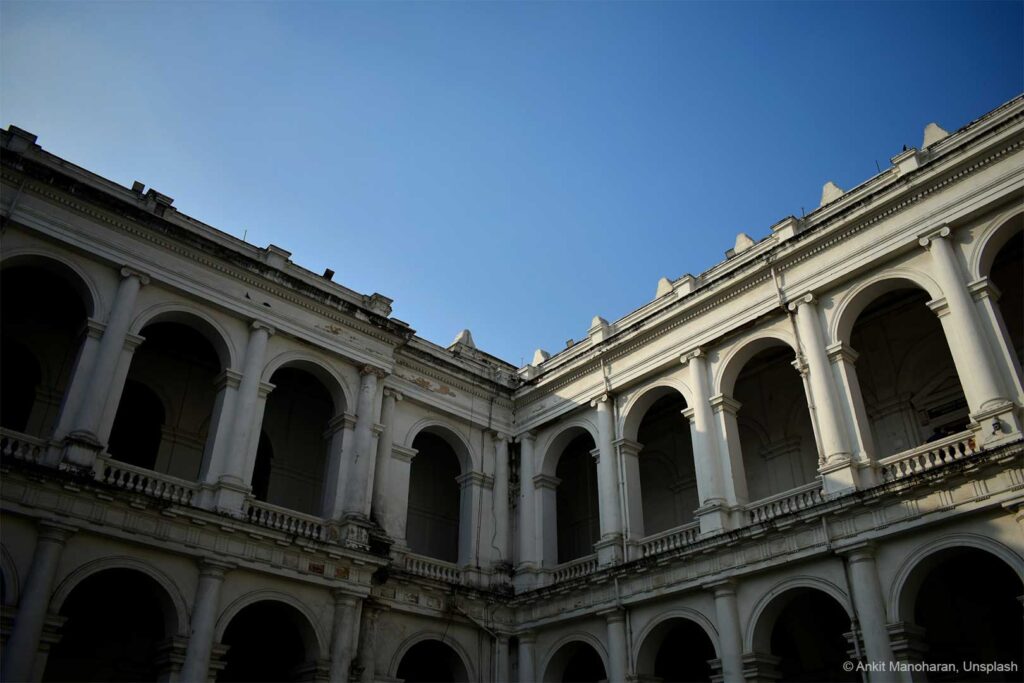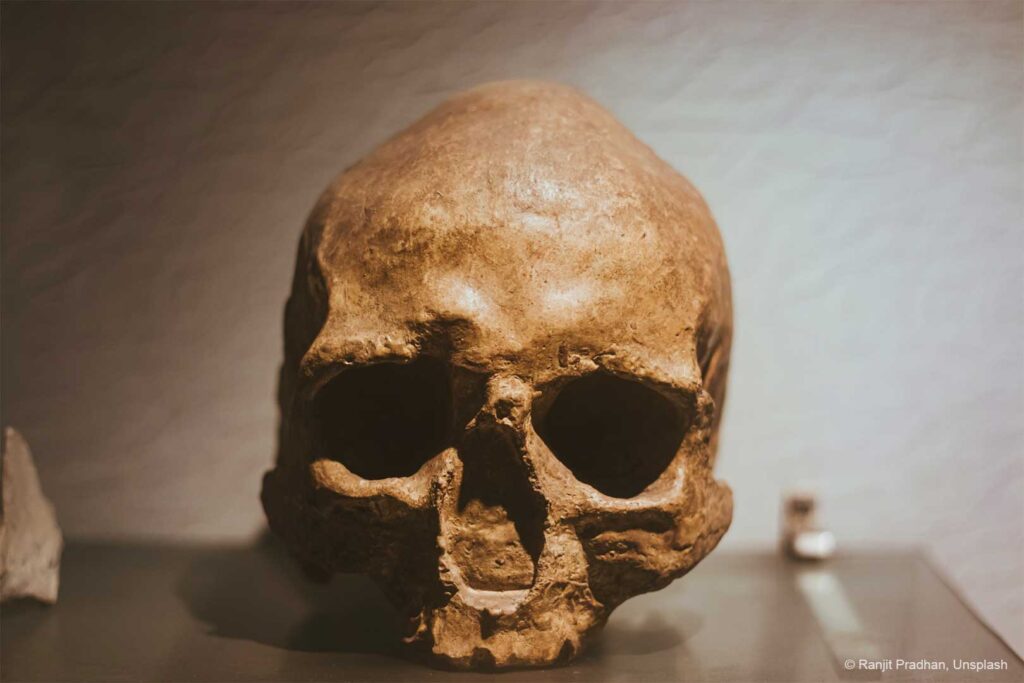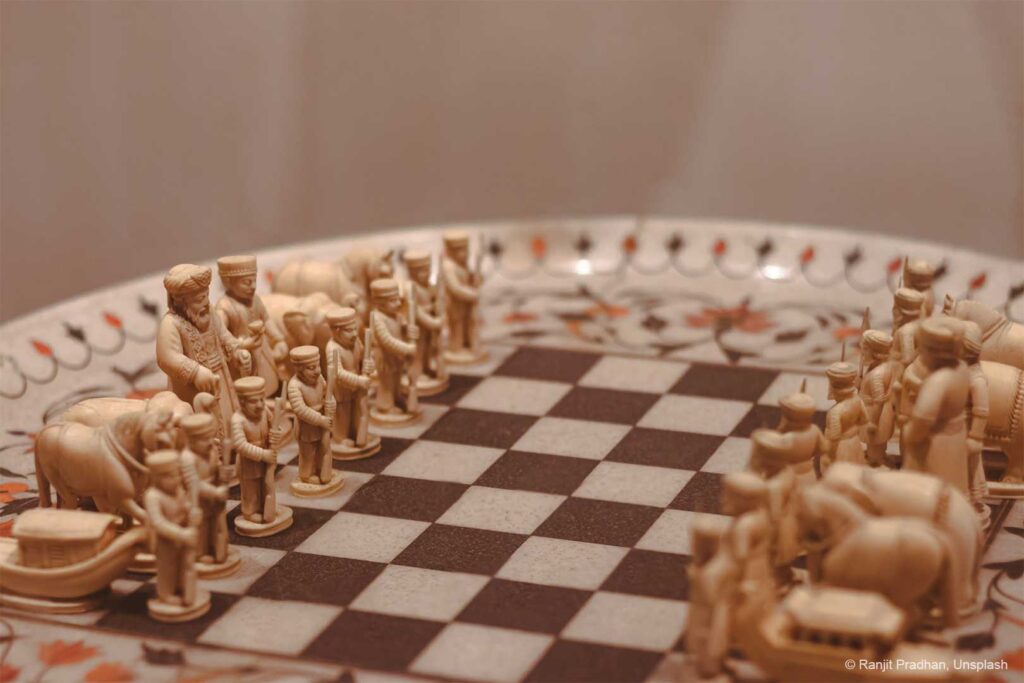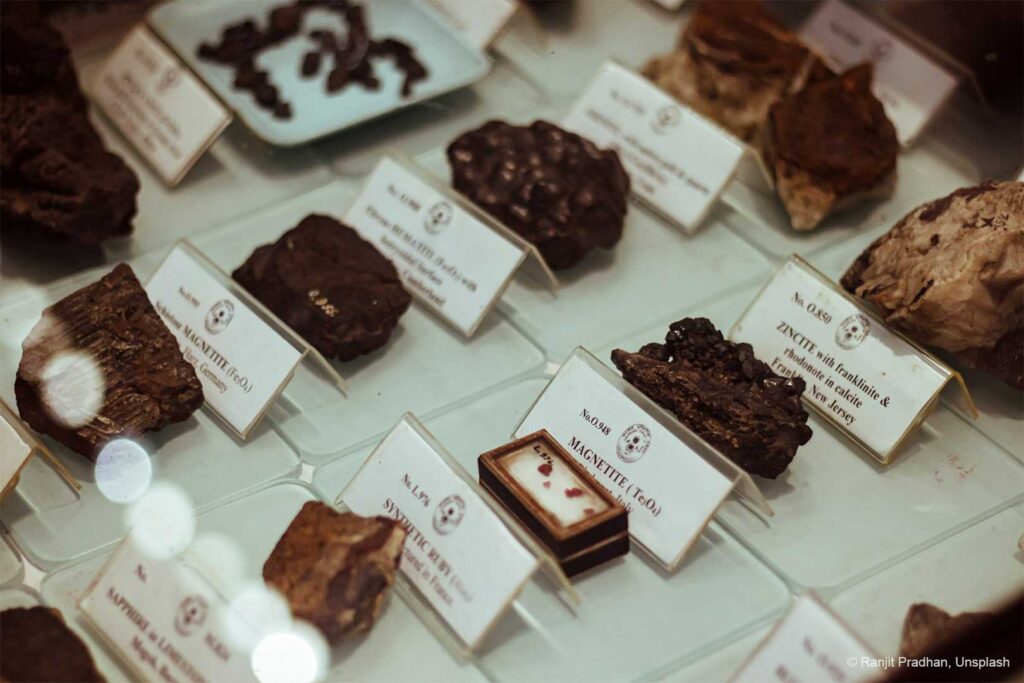Subscribe my Newsletter for new blog posts & tips. Let's stay updated!
The post Kumbh Mela: The Grand Spiritual Gathering of India appeared first on Sudeep Layek.
]]>The Origins and Significance of Kumbh Mela
In Hinduism, Kumbh Mela is a religious festival that is celebrated over a course of approximately 12 years. The “Kumbh Mela” (full Kumbh) occurs every 12 years and the “Ardha Kumbh Mela” (half Kumbh) occurs every 6 years. The roots of Kumbh Mela trace back to Hindu mythology, specifically the legend of Samudra Manthan (the churning of the ocean). According to Hindu mythology, during the churning, a pot (kumbh) filled with the nectar of immortality (Amrit) emerged. A cosmic struggle happened between gods and demons to claim the nectar, and a few drops spilled at four locations—giving rise to the present-day Kumbh Mela sites.
The festival follows an astrological cycle, with each location hosting the Mela based on the alignment of celestial bodies.
The geographical location of the Kumbh Mela spans over four sacred places in India. The Mela sites keep rotating between one of the four pilgrimages on four sacred rivers as listed below:
- In Haridwar, Uttarakhand, on the banks of the Ganges
- In Ujjain, Madhya Pradesh on the banks of the Shipra
- In Nashik, Maharashtra on the banks of the Godavari
- In Prayagraj, Uttar Pradesh, at the confluence of the Ganges, the Yamuna, and the mythical-invisible Saraswati
The Kumbh Mela Experience
Visiting Kumbh Mela is an awesome experience that blends devotion, rituals, and an incredible display of Indian traditions.
A Congregation of Souls
The Kumbh Mela is not just a religious gathering, it is a cultural phenomenon that describes the essence of India’s spiritual heritage. It is a place where ascetics, saints & sadhus and ordinary people come together, united by their faith and devotion. The atmosphere is filled with the chanting of mantras, the aroma of incense, and the collective energy of millions of souls seeking spiritual purification.
A Dip into Divinity
The main interest of the festival is the Shahi Snan (royal bath), when sadhus (holy saints) from various sects, including the Naga Sadhus, take a dip in the sacred river. It is believed that bathing in the sacred rivers during these auspicious times cleanses their sins and brings them closer to liberation. The presence of millions of people immersing themselves in the water, their faces radiant with faith, is truly an amazing experience.
A Cultural Hub
The Mela is a cultural hub where one can witness spiritual lessons, processions of Akharas (monastic orders), and grand religious ceremonies. The mela grounds come alive with lots of colors, sounds, and flavors. You will see stalls selling traditional handicrafts, food vendors offering local foods, and cultural performances showcasing India’s rich heritage.
A Journey of Self-Discovery
The Kumbh Mela is a journey of self-discovery. It’s a chance to reflect on your life and connect with something larger than yourself. It’s a place where you can witness the power of faith and experience the unity of humanity. Whether you’re a believer or not, the Kumbh Mela is an experience that will leave you with a deep sense of wonder.
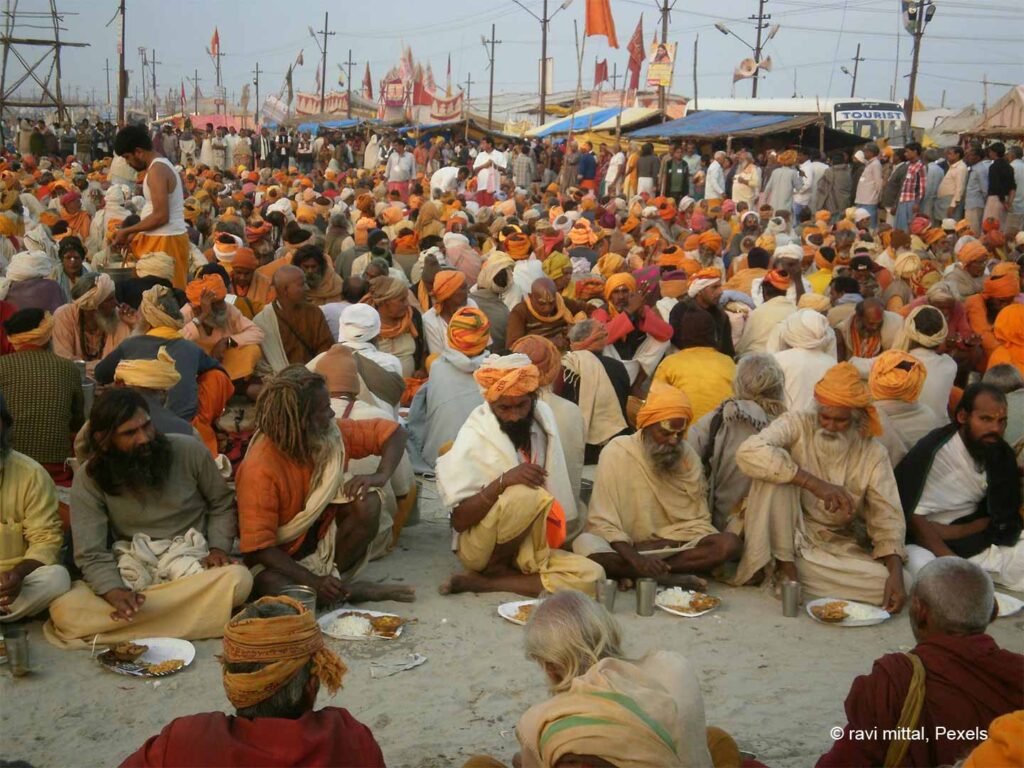
Tips for Attending the Kumbh Mela
If you’re planning to visit this grand event, here are some important tips:
Plan your trip in advance: Due to the massive crowd, accommodation can be difficult. Book your stay in advance, whether in camps, hotels, or ashrams.
Dress Comfortably: Traditional yet modest clothing is recommended.
Stay Aware and Safe: Millions of people come to visit Mela. So, it’s important for you to stay alert, keep your valuables safe and be aware of your surroundings.
Be prepared for crowds: Be prepared for large crowds and potential delays as millions of people attend the Mela.
Embrace the experience: The Kumbh Mela is a memorable and unique experience. You can engage with locals, attend spiritual lessons, and take part in rituals to fully experience the essence of Kumbh Mela.
Witnessing the Kumbh Mela is more than just a journey, it is a transformational experience that connects you with the spiritual soul of India. Whether you are a spiritual seeker, a history lover, or a traveller, this festival offers a remarkable experience that leaves a lasting impression.
Note: Please refer to official sources for the most accurate and up-to-date details.
I hope this blog post is helpful! Let me know if you have any other questions.
The post Kumbh Mela: The Grand Spiritual Gathering of India appeared first on Sudeep Layek.
]]>